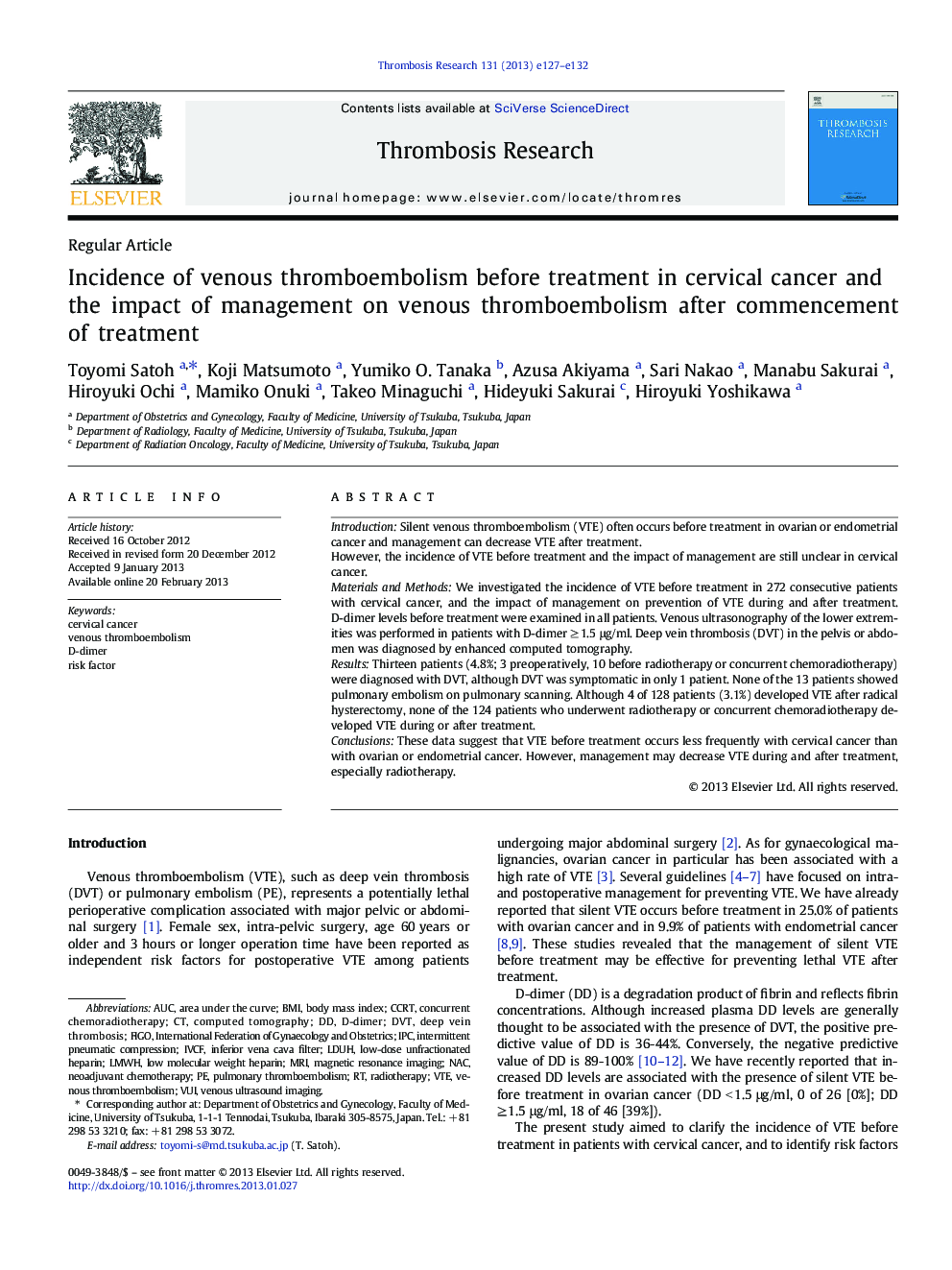| Article ID | Journal | Published Year | Pages | File Type |
|---|---|---|---|---|
| 3027228 | Thrombosis Research | 2013 | 6 Pages |
IntroductionSilent venous thromboembolism (VTE) often occurs before treatment in ovarian or endometrial cancer and management can decrease VTE after treatment.However, the incidence of VTE before treatment and the impact of management are still unclear in cervical cancer.Materials and MethodsWe investigated the incidence of VTE before treatment in 272 consecutive patients with cervical cancer, and the impact of management on prevention of VTE during and after treatment. D-dimer levels before treatment were examined in all patients. Venous ultrasonography of the lower extremities was performed in patients with D-dimer ≥ 1.5 μg/ml. Deep vein thrombosis (DVT) in the pelvis or abdomen was diagnosed by enhanced computed tomography.ResultsThirteen patients (4.8%; 3 preoperatively, 10 before radiotherapy or concurrent chemoradiotherapy) were diagnosed with DVT, although DVT was symptomatic in only 1 patient. None of the 13 patients showed pulmonary embolism on pulmonary scanning. Although 4 of 128 patients (3.1%) developed VTE after radical hysterectomy, none of the 124 patients who underwent radiotherapy or concurrent chemoradiotherapy developed VTE during or after treatment.ConclusionsThese data suggest that VTE before treatment occurs less frequently with cervical cancer than with ovarian or endometrial cancer. However, management may decrease VTE during and after treatment, especially radiotherapy.
